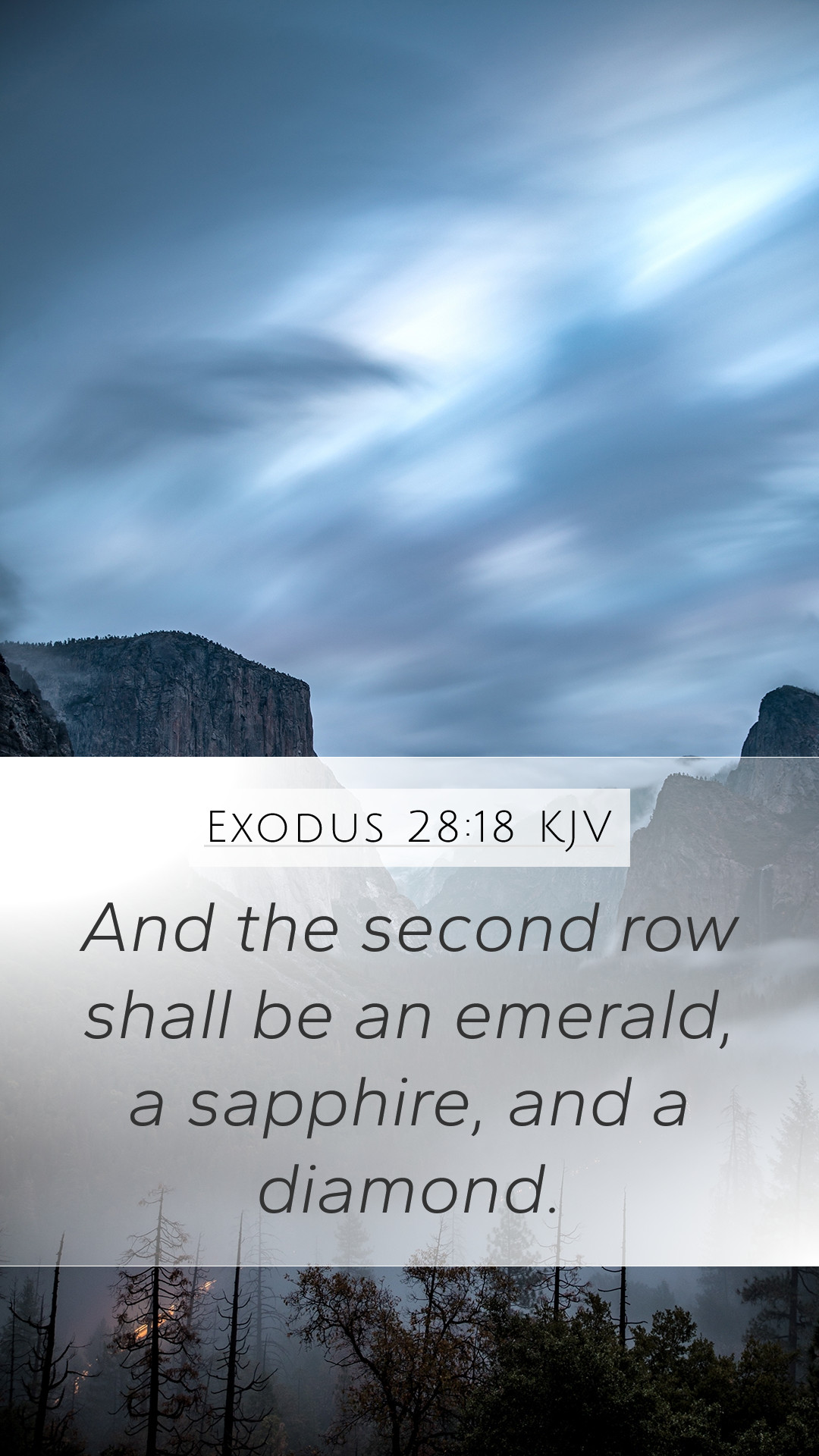Bible Verse Commentary: Exodus 28:18
The verse Exodus 28:18 forms part of the instructions given by God to Moses regarding the garments of the priests, particularly the high priest. In this passage, specific details about the construction of the breastplate that the high priest is to wear are provided. This breastplate is symbolic and serves multiple purposes; it's not only ornamental but also holds deep spiritual significance.
Context of Exodus 28
Exodus 28 as a whole provides a thorough description of the priestly garments that God commands Moses to make for Aaron, the high priest. Each item of clothing has its own significance and purpose in the ritual life of Israel. The breastplate, particularly, is significant as it represents the twelve tribes of Israel.
Detailed Explanation of Exodus 28:18
In Exodus 28:18, we find that the "second row shall be a jacinth, a sapphire, and a diamond." Each of these stones has various interpretations within biblical commentaries. Matthew Henry highlights the importance of these stones representing the tribes of Israel, with each stone corresponding to a particular tribe that the high priest carries before God. This act symbolizes intercession and the high priest’s role as a mediator between God and His people.
Insights from Commentaries
-
Matthew Henry:
Henry emphasizes not only the beauty of the breastplate but also the weighty duty it symbolizes. The stones placed within the breastplate represent the full inclusion of Israel in the priestly offerings before God, signifying that God remembers His people.
-
Albert Barnes:
Barnes elaborates on the functionality of the breastplate, noting that each gem has its own significance—representing the name of each tribe inscribed upon them. His commentary suggests that this indicates each tribe's place in God’s eye and in the worship practices intended for Israel.
-
Adam Clarke:
Clarke delves into the literal significance of precious stones in ancient Israel, explaining that they not only represented beauty but also value. His insights imply a deeper spiritual symbolism: God’s high priest is adorned with the worth of His chosen people, reflecting God’s glory to the nation.
Theological Implications
Theologically, the breastplate serves to illustrate the high priest’s responsibilities and relationship with the people of Israel. The act of carrying the names of the tribes upon him illustrates God's closeness to His people — that He takes their names and needs upon Himself as the intercessor.
Application of Exodus 28:18
In applying the principles of this verse in our lives today, we can examine our roles within our communities and how we serve as intercessors for others. Just as the high priest bore the names of the tribes, we too should carry the burdens of those around us in prayer and service, seeking to embody God's love and high priestly spirit. This calls for a deep commitment to fellowship and community.
Cross References
- Exodus 39:10-14: Further detailing the preparation of the breastplate.
- Leviticus 8:7-9: The anointing and role of Aaron as high priest.
- Revelation 21:19-20: A symbolic reference to the precious stones in God’s New Jerusalem.
Conclusion
Exodus 28:18 not only describes a specific part of the priestly garments but also illustrates the deep connection between the high priest and the people of Israel. Through careful study and interpretation of this verse and its context, we can gain insights into biblical history and its relevance to our lives today. Understanding scripture is essential for a fruitful faith journey, and this passage serves as a powerful reminder of our roles within God’s plan for His people.


